In today’s highly competitive online landscape, having a strong content strategy is essential for driving traffic to your website and boosting your search engine rankings. One such powerful strategy is creating an SEO content hub. In this blog post, we’ll delve into the concept of a content hub, its role in SEO, and the benefits it can bring to your overall content marketing efforts. Let’s get started!
What Is A Content Hub In SEO?
A content hub SEO is a centralized resource on your website that houses a collection of high-quality, comprehensive, and interlinked content pieces around a specific topic or theme. It can include various content formats such as blog posts, articles, videos, infographics, and more. By grouping related content together, a content hub makes it easy for users to find and navigate through the information they’re looking for, ultimately enhancing their experience on your website.
In the context of SEO, a content hub serves as a valuable tool for organizing your content in a way that search engines can easily understand, crawl, and index. It also helps to establish your website as an authoritative source on a particular subject, which can increase your online visibility and rank higher on Google.
Why Are Content Hubs Useful for SEO?
There are several reasons why content hubs can significantly contribute to your SEO strategy and why you need a content hub:
Improved User Experience
A well-structured content hub allows users to easily navigate through your website and find the information they’re looking for. This not only increases user satisfaction but also encourages them to spend more time on your site, resulting in lower bounce rates and higher dwell time, both of which are positive signals for search engines.
Increased Internal Linking
A content marketing hub naturally encourages internal linking, as you’ll be connecting related content pieces within the hub. This allows search engines to better understand the hierarchy and relationship between your pages, which can lead to improved indexing and ranking.
Enhanced Topical Authority
By creating a content hub around a specific topic or theme, you’re demonstrating your expertise and knowledge in that area. This helps to establish your website as an authoritative source, making it more likely that search engines will rank your content higher in search results.
Link Building Opportunities
High-quality, comprehensive content hubs are more likely to attract backlinks from other websites, as they provide valuable resources for users. This can further boost your domain authority and search engine rankings.
Increased Social Shares
Marketing content hubs make it easy for users to share your content across social media platforms, which can lead to increased exposure and traffic to your website.
Elements Of A Content Hub
To build an effective content hub, it’s crucial to consider its various components and how they contribute to its success. By carefully selecting and optimizing each element, you can create a content hub that not only appeals to your target audience but also boosts your SEO efforts.
In this section, we’ll explore the key elements of a content hub, including topics, keywords, formats, locations, and collaborators.
Topics
Choosing the right topics for your content hub is essential for establishing your expertise and authority in your niche. Start by identifying your target audience’s pain points, interests, and questions, then create content that addresses these areas. Focus on topics that are relevant to your industry, have sufficient search volume, and offer opportunities for creating comprehensive, high-quality content.
Keywords
Keywords play a vital role in ensuring your content hub is discoverable by search engines and users alike. Conduct thorough keyword research to identify the most relevant and valuable terms for your topics. Optimize your content by including these keywords in strategic locations, such as titles, headings, meta descriptions, and throughout the body text. However, keep in mind to maintain a natural flow in your content and avoid keyword stuffing.
Formats
Offering a variety of content formats can help cater to different user preferences and learning styles, making your content hub more engaging and accessible. Consider incorporating blog posts, articles, videos, infographics, podcasts, and other formats that complement your topics and resonate with your audience. By diversifying your content formats, you can also increase the likelihood of attracting backlinks and social shares.
Locations
The location of your content hub on your website is important for user experience and SEO. Ideally, your content hub should be easily accessible from your homepage or main navigation menu. Create a dedicated landing page for your content hub that provides an overview of the available content and allows users to navigate through the different sections. Additionally, ensure that your individual content pieces are interlinked and well-organized within the hub for easy navigation.
Collaborators
Collaborating with industry experts, influencers, or guest contributors can add credibility and value to your content hub. By featuring insights and perspectives from other professionals, you can strengthen your content hub’s authority, increase its appeal to your target audience, and potentially expand your reach. Moreover, collaborations can lead to valuable partnerships and networking opportunities within your industry.
How To Build A Content Hub
Creating a content hub is an excellent way for businesses and individuals to showcase their expertise, provide valuable resources to their audience, and strengthen their online presence. A well-structured content hub not only helps establish you as an authority in your field but also improves your search engine rankings.
To help you create a content hub that effectively serves your audience and drives results, we’ve outlined five crucial steps to follow.
Step 1. Sync Your Expertise With the Hub Topic
Your content hub should revolve around a central topic that reflects your expertise and the interests of your target audience. Start by identifying your niche and determining what unique insights and knowledge you can share. Ensure that the chosen topic has enough depth to cover a variety of subtopics so that you can create comprehensive and valuable content for your visitors.
Step 2. Choose Your Subtopics
Once you’ve established your central topic, it’s time to dive deeper and identify subtopics that will be covered within your content hub. These subtopics should be relevant, diverse, and complementary to your main theme. Consider your audience’s most pressing questions or concerns and use them as a starting point to brainstorm subtopics. This will ensure that your content remains engaging, informative, and in line with your audience’s needs.
Step 3. Put Your Content Hub in Order
Organize your content hub in a way that makes it easy for users to navigate and find the information they’re looking for. Group related subtopics together and present them in a logical order. You can use categories, tags, or even a visual flowchart to help guide your audience through your content. Remember, a well-structured content hub not only enhances user experience but also boosts your chances of ranking higher on search engine results.
Step 4. Integrate Internal Links
Internal linking is a crucial aspect of building an effective content hub. By linking related pieces of content within your hub, you can guide your audience to more in-depth information on specific topics and keep them engaged on your site longer. Additionally, strategically placed internal links can help search engines better understand the structure of your content hub and improve your SEO.
Step 5. Create and Keep Up With Your Content
A successful content hub requires regular updates and new material to keep your audience engaged and coming back for more. Create a content calendar to plan and schedule your posts, ensuring that you consistently publish fresh and relevant content. Don’t forget to review and update existing content regularly, ensuring it remains accurate, informative, and up-to-date. This continuous commitment to maintaining your content hub will help establish you as a reliable source of information and authority in your field.
Content Hub Examples
Content hubs come in various shapes and sizes, each tailored to the specific needs and preferences of their target audiences. To provide you with a clearer understanding of what a successful content hub looks like, we’ll explore some examples across different industries.
These content hubs showcase diverse approaches to organizing and presenting content, offering valuable insights for anyone looking to create or improve their own content hub.
1. HubSpot’s Marketing Blog
HubSpot’s Marketing Blog is a comprehensive content hub that covers various topics related to digital marketing, sales, and customer service. With its well-organized categories and search functionality, users can easily find articles, ebooks, and guides that cater to their specific interests.
2. Healthline
Healthline is an extensive content hub focusing on health, wellness, and medical information. It offers a mix of articles, videos, and interactive tools, making it easy for users to find reliable, evidence-based information on various health topics.
3. Shopify’s Blog
Shopify’s Blog is a content hub dedicated to providing resources and guidance for entrepreneurs and online store owners. It covers topics like marketing, sales, and eCommerce, offering a wealth of information to help businesses grow and succeed.
How Often Should I Update My Content Hub?
The frequency at which you should update your content hub depends on several factors, such as your industry, audience, and the resources available to you. However, as a general rule, it’s essential to maintain a consistent publishing schedule that keeps your content fresh and relevant.
For most content hubs, updating at least once a week with new content is a good starting point. This allows you to deliver fresh insights, stay current with industry trends, and keep your audience engaged. However, if your resources permit, you may benefit from publishing more frequently.
In addition to adding new content, it’s important to regularly review and update your existing content. This ensures that your content hub remains accurate, up-to-date, and valuable to your audience. Aim to review your content at least once every 6-12 months, making updates as needed to keep it current and relevant.
Invest in a Content Hub Now
In conclusion, creating a content hub is a powerful SEO strategy that not only organizes your content but also enhances the user experience, improves internal linking, establishes topical authority, and attracts backlinks. By investing in the development of a content hub, you can effectively boost your search engine rankings and drive more traffic to your website.
LeadOrigin provides a fresh perspective on the modern marketing landscape. Our goal is to assist you in bringing your company into the 21st century and making a name for itself in the digital marketplace. We pay attention, work together with you, and provide a method specifically designed to help your business achieve its aims. For more information about our digital marketing services in Austin, Houston, and Dallas, contact our experts today!





